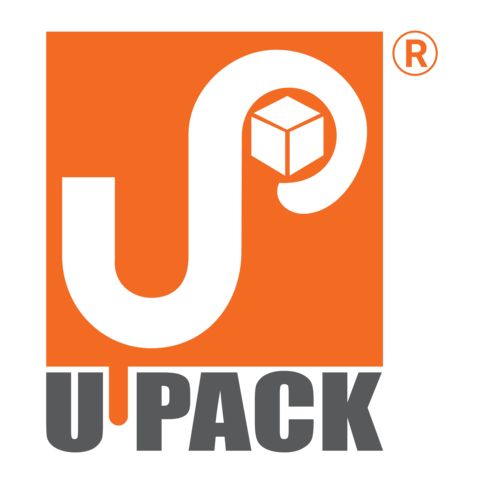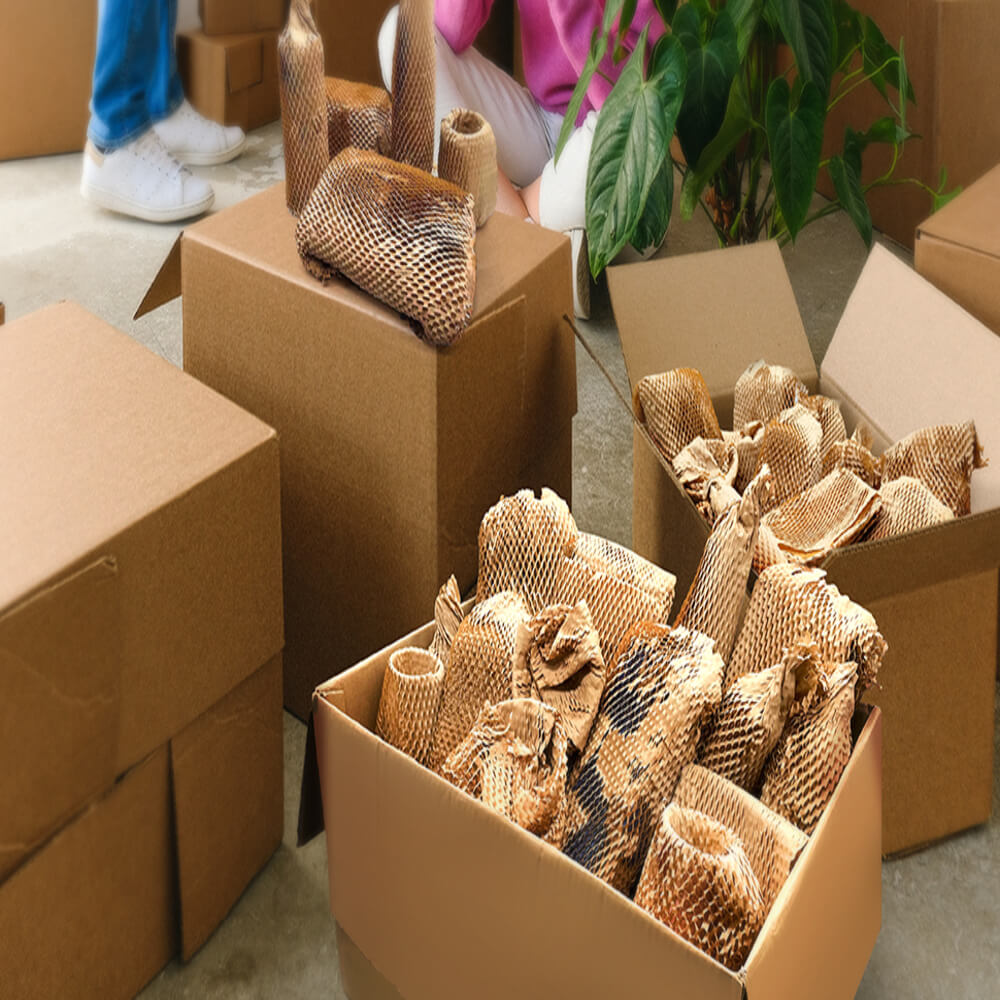Bee Eco: Wrap It Up with Paper Honeycomb!
Bee Eco: Wrap It Up with Paper Honeycomb!
Paper honeycomb wrap is a versatile packaging material that is gaining popularity in various industries due to its unique properties and eco-friendly nature. It is made from layers of paper that are glued together in a honeycomb structure, creating a lightweight and strong material that can be used for a wide range of applications.
The honeycomb structure of the paper wrap provides excellent cushioning and shock absorption properties, making it ideal for protecting fragile items during transportation and storage. The individual cells of the honeycomb act as small air pockets, which help to distribute the impact energy and prevent it from reaching the packaged product. This makes paper honeycomb wrap an excellent choice for packaging delicate items such as glassware, electronics, and artwork.
In addition to its protective qualities, paper honeycomb wrap is also highly sustainable and environmentally friendly. It is made from recycled paper and is fully recyclable at the end of its life cycle. The production process of paper honeycomb wrap consumes less energy and water compared to other packaging materials, making it a more sustainable choice for businesses looking to reduce their environmental impact.
One of the key advantages of paper honeycomb wrap is its lightweight nature. Compared to traditional packaging materials such as foam or plastic, paper honeycomb wrap is significantly lighter, which can result in reduced shipping costs and lower carbon emissions. Its lightweight nature also makes it easier to handle and manoeuvre during the packaging process, improving efficiency and reducing labour costs.
Another benefit of paper honeycomb wrap is its versatility. It can be easily customized to fit various shapes and sizes, making it suitable for packaging products of different dimensions. The honeycomb structure can be cut and shaped to create custom inserts and dividers, providing additional protection and organization for the packaged items. This flexibility makes paper honeycomb wrap a popular choice for industries such as automotive, furniture, and consumer goods.
Furthermore, paper honeycomb wrap offers excellent insulation properties. The air pockets within the honeycomb structure act as a barrier against temperature changes, helping to maintain the desired temperature of the packaged product. This makes it suitable for packaging items that are sensitive to temperature fluctuations, such as food and pharmaceuticals.
In terms of cost-effectiveness, paper honeycomb wrap can be a viable option for businesses. While the initial cost of the material may be slightly higher compared to traditional packaging materials, the long-term benefits outweigh the initial investment. The lightweight nature of paper honeycomb wrap reduces shipping costs, and its recyclability eliminates disposal costs.
The Benefits of Paper Honeycomb Wrap
In today's world, where environmental concerns are at the forefront of many discussions, finding sustainable packaging solutions has become a top priority for businesses across various industries. One such solution that has gained significant attention is paper honeycomb wrap. This innovative packaging material offers numerous benefits, ranging from its eco-friendly nature to its exceptional protective properties. In this article, we will explore the advantages of paper honeycomb wrap and why it is becoming an increasingly popular choice for businesses worldwide.
First and foremost, one of the most significant benefits of paper honeycomb wrap is its sustainability. Unlike traditional packaging materials such as plastic or Styrofoam, paper honeycomb wrap is made from renewable resources. The primary component of this packaging material is paper, which is derived from trees. However, it is important to note that the production of paper honeycomb wrap does not contribute to deforestation. In fact, many manufacturers use recycled paper or source their materials from sustainably managed forests, ensuring that the packaging is environmentally responsible.
Furthermore, paper honeycomb wrap is fully recyclable and biodegradable. This means that after its use, it can be easily recycled or decomposed, minimizing its impact on the environment. Unlike plastic packaging, which can take hundreds of years to break down, paper honeycomb wrap naturally decomposes within a relatively short period, reducing waste and pollution. By choosing this sustainable packaging solution, businesses can actively contribute to reducing their carbon footprint and promoting a greener future.
Apart from its eco-friendly nature, paper honeycomb wrap offers exceptional protective properties. The unique honeycomb structure of this packaging material provides excellent cushioning and shock absorption, making it ideal for protecting fragile items during transportation or storage. The hexagonal cells of the honeycomb structure act as individual shock absorbers, effectively absorbing and dispersing impact energy. This ensures that the packaged goods remain intact and undamaged, even when subjected to rough handling or accidental drops.
Moreover, paper honeycomb wrap is lightweight yet incredibly strong. This lightweight nature not only reduces shipping costs but also minimizes fuel consumption during transportation. As a result, businesses can save on both financial and environmental resources. Additionally, the strength of paper honeycomb wrap allows for stacking multiple packages without compromising the integrity of the goods inside. This feature is particularly beneficial for businesses that need to maximize storage space or transport large quantities of products efficiently.
Another advantage of paper honeycomb wrap is its versatility. This packaging material can be easily customized.

USESES OF PAPER HONEYCOMB WRAP
Paper honeycomb wrap is a versatile and eco-friendly packaging material that has a wide range of uses across various industries. This semi technical content aims to explore the different applications of paper honeycomb wrap and highlight its benefits and advantages.
Paper honeycomb wrap, also known as honeycomb paperboard or honeycomb cardboard, is a lightweight and durable packaging material made from recycled paper. It consists of a series of hexagonal cells that are bonded together to form a strong and rigid structure. This unique design gives paper honeycomb wrap its exceptional strength-to-weight ratio, making it an ideal choice for a variety of applications.
One of the primary uses of paper honeycomb wrap is in the packaging industry. It is commonly used as a protective cushioning material for fragile and delicate items during transportation and storage. The honeycomb structure of the wrap provides excellent shock absorption and impact resistance, ensuring that the packaged goods remain safe and intact throughout the entire supply chain.
In addition to its protective properties, paper honeycomb wrap also offers several other advantages in the packaging industry. Its lightweight nature helps reduce shipping costs and carbon emissions, making it a more sustainable alternative to traditional packaging materials. Moreover, it is easy to handle and can be easily cut and shaped to fit different product sizes and shapes, providing a customized packaging solution.
Another significant application of paper honeycomb wrap is in the furniture industry. It is commonly used as a core material for lightweight and sturdy furniture components such as doors, panels, and tabletops. The honeycomb structure provides excellent strength and rigidity, allowing manufacturers to create furniture pieces that are both durable and lightweight. This is particularly beneficial for applications where weight reduction is crucial, such as in the aviation and automotive industries.
The use of paper honeycomb wrap in the construction industry is also gaining popularity. It is often used as a structural material for doors, partitions, and wall panels. The honeycomb structure provides excellent insulation properties, helping to regulate temperature and reduce energy consumption. Additionally, paper honeycomb wrap is fire-resistant, making it a safe choice for construction applications.
Beyond packaging, furniture, and construction, paper honeycomb wrap has found its way into various other industries. It is used in the automotive industry for interior components such as headliners and trunk liners, where its lightweight and sound-absorbing properties are highly valued. In the aerospace industry, it is used for aircraft interiors, providing a lightweight and fire-resistant solution. Moreover, paper honeycomb wrap is also used in the manufacturing of display.

ADVANTAGES OF PAPER HONEYCOMB WRAP
Introduction
In recent years, there has been a growing concern about the environmental impact of packaging materials. As consumers become more conscious of their carbon footprint, businesses are seeking sustainable alternatives to traditional packaging options. One such solution gaining popularity is paper honeycomb wrap. This semi technical content aims to explore the advantages of using paper honeycomb wrap as a sustainable packaging material.
Lightweight and Durable
Paper honeycomb wrap is known for its lightweight yet durable nature. The honeycomb structure consists of hexagonal cells, which provide excellent strength-to-weight ratio. This unique design allows for the creation of packaging materials that are both strong and lightweight, reducing the overall weight of the package. As a result, transportation costs can be significantly reduced, leading to lower fuel consumption and carbon emissions.
Shock Absorption and Protection
One of the key advantages of paper honeycomb wrap is its exceptional shock absorption capabilities. The honeycomb structure acts as a cushion, absorbing and dispersing impact energy. This makes it an ideal choice for packaging fragile items such as glassware, electronics, or delicate artworks. The shock-absorbing properties of paper honeycomb wrap help protect the packaged goods from damage during transit, reducing the risk of returns or replacements.
Customizable and Versatile
Paper honeycomb wrap offers a high degree of customization and versatility. It can be easily tailored to fit various shapes and sizes, making it suitable for a wide range of products. The flexibility of this packaging material allows businesses to create custom packaging solutions that meet their specific requirements. Whether it's a small electronic device or a large piece of furniture, paper honeycomb wrap can be adapted to provide a snug and secure fit.
Sustainable and Recyclable
One of the most significant advantages of paper honeycomb wrap is its sustainability. Made from recycled paper or renewable resources, it is an eco-friendly alternative to traditional packaging materials such as plastic or foam. The production process of paper honeycomb wrap consumes less energy and generates fewer greenhouse gas emissions compared to other packaging options. Additionally, it is fully recyclable, contributing to the circular economy by reducing waste and minimizing environmental impact.
Cost-Effective
Contrary to popular belief, paper honeycomb wrap can be a cost-effective packaging solution. While the initial investment may be slightly higher than traditional materials, the long-term benefits outweigh the upfront costs. The lightweight nature of paper honeycomb wrap reduces shipping expenses.

The Limitations of Paper Honeycomb Wrap
Exploring its Drawbacks and Alternatives
Introduction
In recent years, there has been a growing interest in sustainable packaging solutions, with businesses and consumers alike seeking alternatives to traditional materials that have a negative impact on the environment. One such alternative that has gained popularity is paper honeycomb wrap. This innovative packaging material offers several advantages, including its lightweight nature, recyclability, and ability to provide cushioning and protection. However, like any product, paper honeycomb wrap also has its limitations. In this article, we will explore these limitations in detail, as well as discuss potential alternatives that can address these drawbacks.
Limited Load-Bearing Capacity
One of the primary limitations of paper honeycomb wrap is its relatively low load-bearing capacity. While it is suitable for lightweight products, it may not be able to adequately support heavier items. This can be a significant drawback for businesses that need to transport or store goods that exceed the weight limit of paper honeycomb wrap. In such cases, alternative packaging materials, such as corrugated cardboard or foam, may be more suitable due to their higher strength and load-bearing capacity.
Vulnerability to Moisture
Another limitation of paper honeycomb wrap is its vulnerability to moisture. Unlike plastic or foam packaging materials, paper honeycomb wrap can easily absorb moisture, which can compromise its structural integrity and protective properties. This makes it unsuitable for products that require protection from moisture or are likely to come into contact with liquids during transportation or storage. In such scenarios, businesses may need to consider alternative packaging materials, such as moisture-resistant plastics or laminated cardboard, to ensure the safety and integrity of their products.
Limited Durability
While paper honeycomb wrap offers excellent cushioning and protection, it may not be as durable as other packaging materials. The paper cells that make up the honeycomb structure can be susceptible to damage, especially when subjected to rough handling or extreme conditions. This limitation can be a concern for businesses that require packaging solutions that can withstand rigorous transportation or storage environments. In such cases, materials like moulded pulp or expanded polystyrene (EPS) foam may offer better durability and protection.
Size and Shape Limitations
Paper honeycomb wrap is typically available in standard sizes and shapes, which may not always align with the specific requirements of certain products. This limitation can be a challenge for businesses that need customized packaging solutions to accommodate irregularly shaped or oversized items.

Guidelines for using PAPER HONEYCOMB WRAP
Honeycomb wrap is a versatile packaging material that is commonly used for protecting fragile items during transportation or storage. It consists of a series of hexagonal cells that are interconnected, creating a strong and flexible structure. This semi technical content aims to provide guidelines for using honeycomb wrap effectively, without being patronizing.
Understanding the Properties of Honeycomb Wrap
Honeycomb wrap is made from a variety of materials, including paper, cardboard, or plastic. It is lightweight yet provides excellent cushioning and shock absorption properties. The hexagonal cells distribute the impact evenly, minimizing the risk of damage to the packaged item. It is important to understand these properties to make the most of honeycomb wrap.
Choosing the Right Honeycomb Wrap
When selecting honeycomb wrap, consider the fragility and size of the item you are packaging. Honeycomb wrap comes in various thicknesses and cell sizes, so choose one that provides adequate protection for your specific needs. Thicker honeycomb wrap is suitable for heavier or more delicate items, while smaller cell sizes are ideal for smaller objects.
Preparing the Item for Packaging
Before using honeycomb wrap, ensure that the item is clean and free from any loose or sharp edges that could puncture the wrap. If necessary, use additional protective materials such as bubble wrap or foam to provide extra cushioning. It is also important to measure the dimensions of the item accurately to determine the amount of honeycomb wrap required.
Wrapping the Item
To wrap the item, lay it on a flat surface and unroll the honeycomb wrap. Start by folding the wrap over the item, ensuring that it covers all sides. If the item has protruding parts or irregular shapes, consider using additional layers of honeycomb wrap or cutting the wrap to fit the specific contours. Secure the wrap in place using tape or adhesive if necessary.
Filling Empty Spaces
To maximize the protection provided by honeycomb wrap, fill any empty spaces within the packaging. This can be done using additional honeycomb wrap, foam peanuts, or other suitable materials. The goal is to prevent the item from moving or shifting during transportation, reducing the risk of damage.
Sealing the Package
Once the item is securely wrapped and any empty spaces are filled, seal the package using appropriate packaging materials such as tape or strapping. Ensure that the package is tightly sealed to prevent any movement or exposure to external elements.



